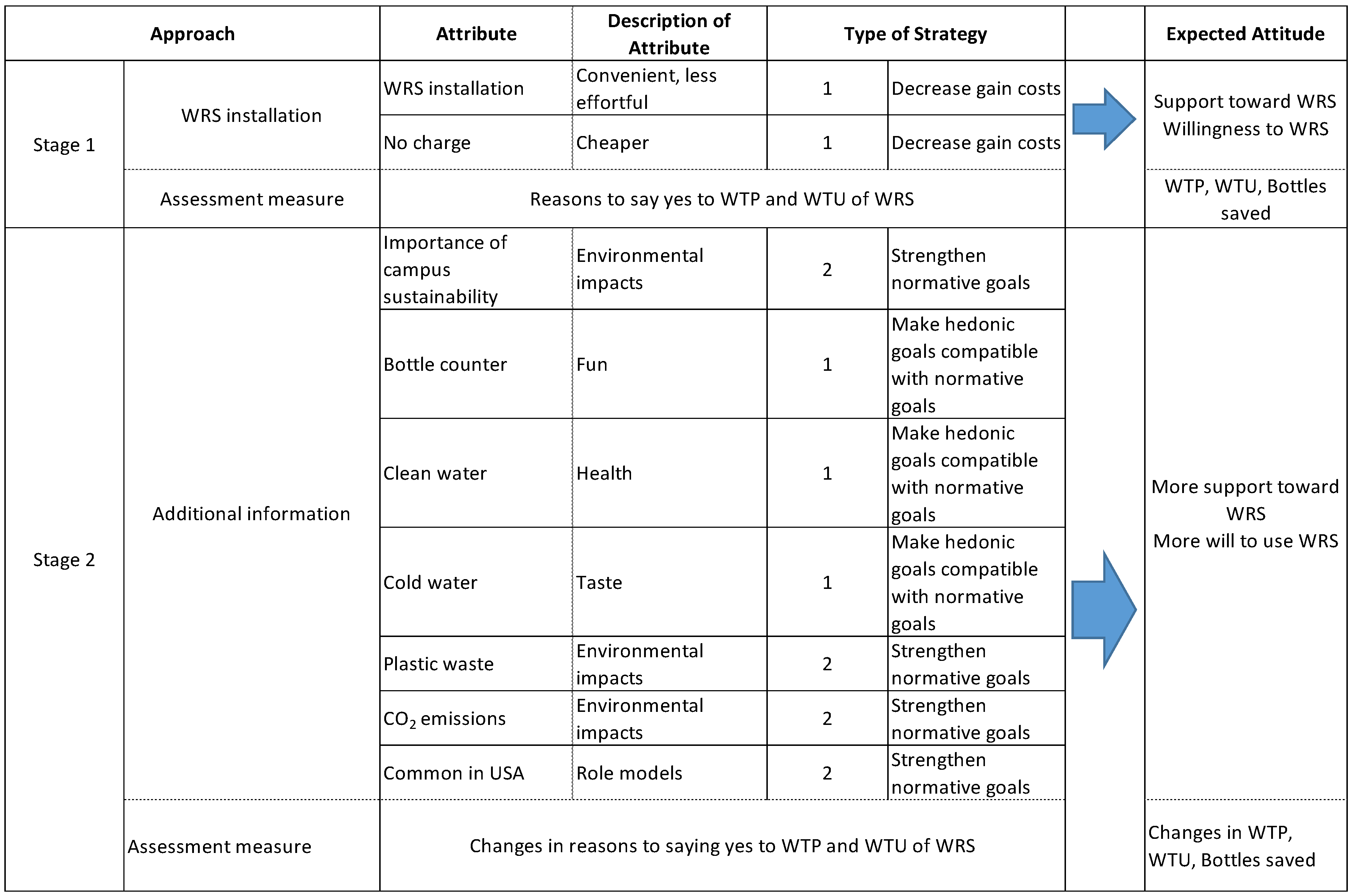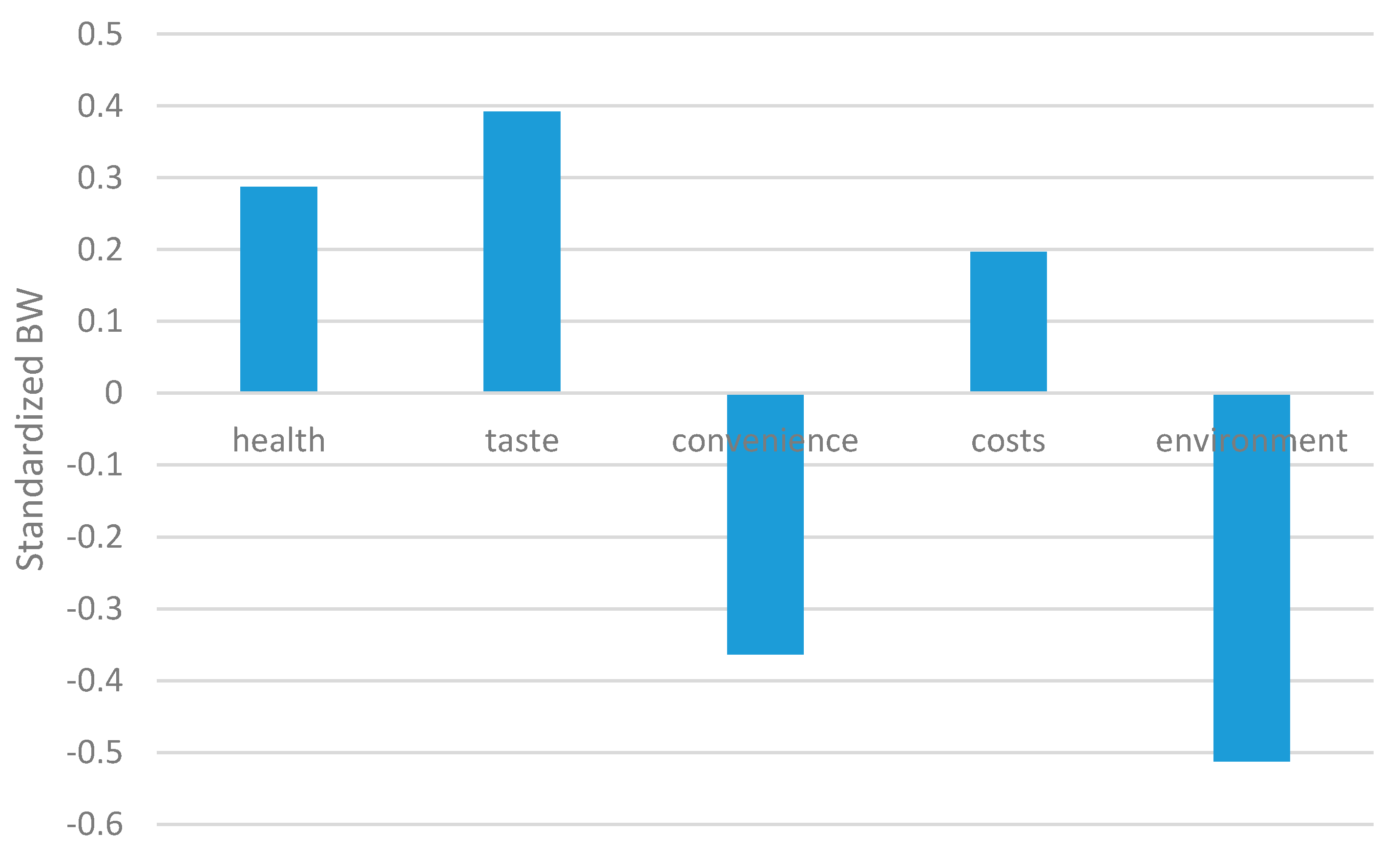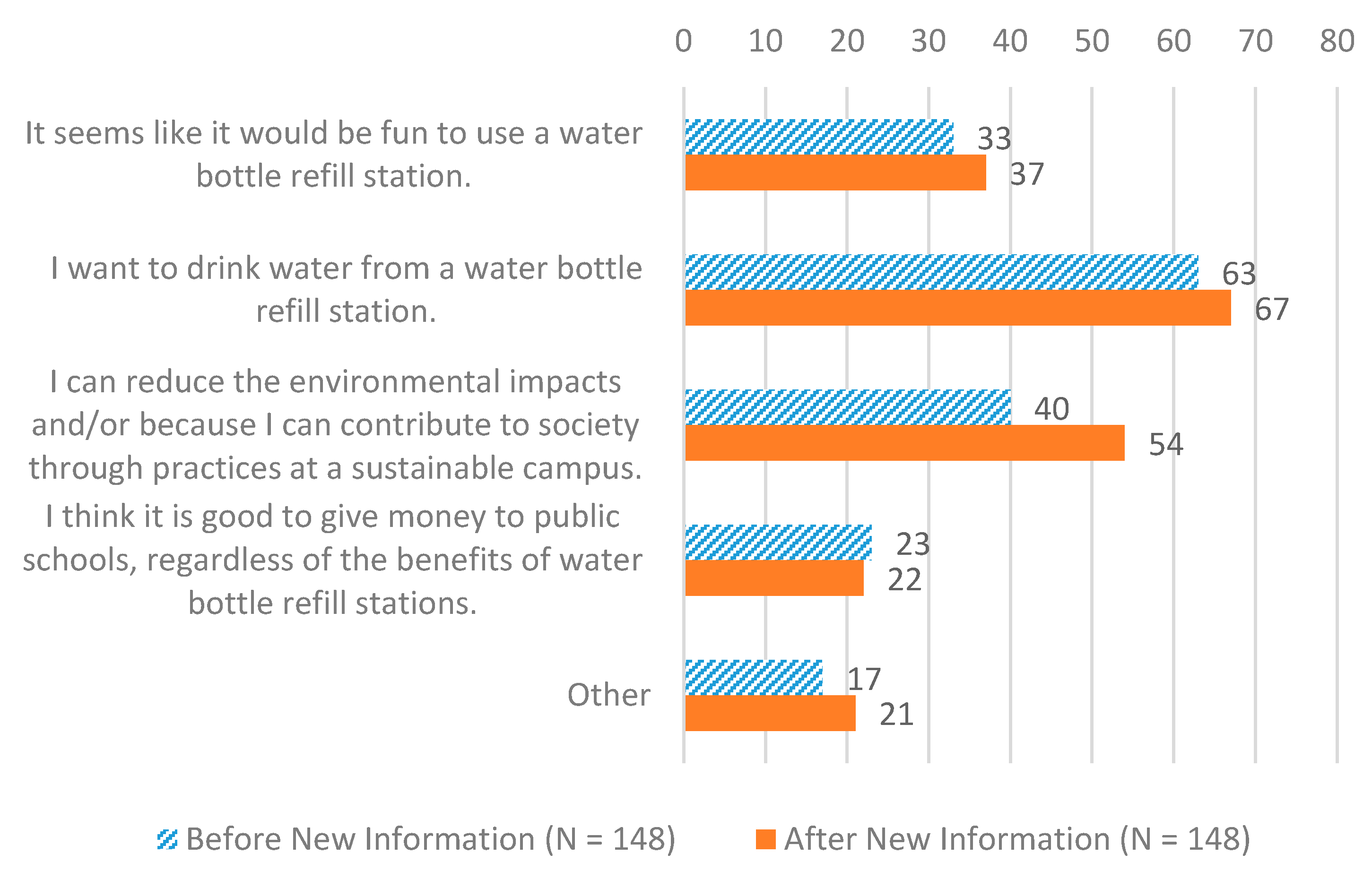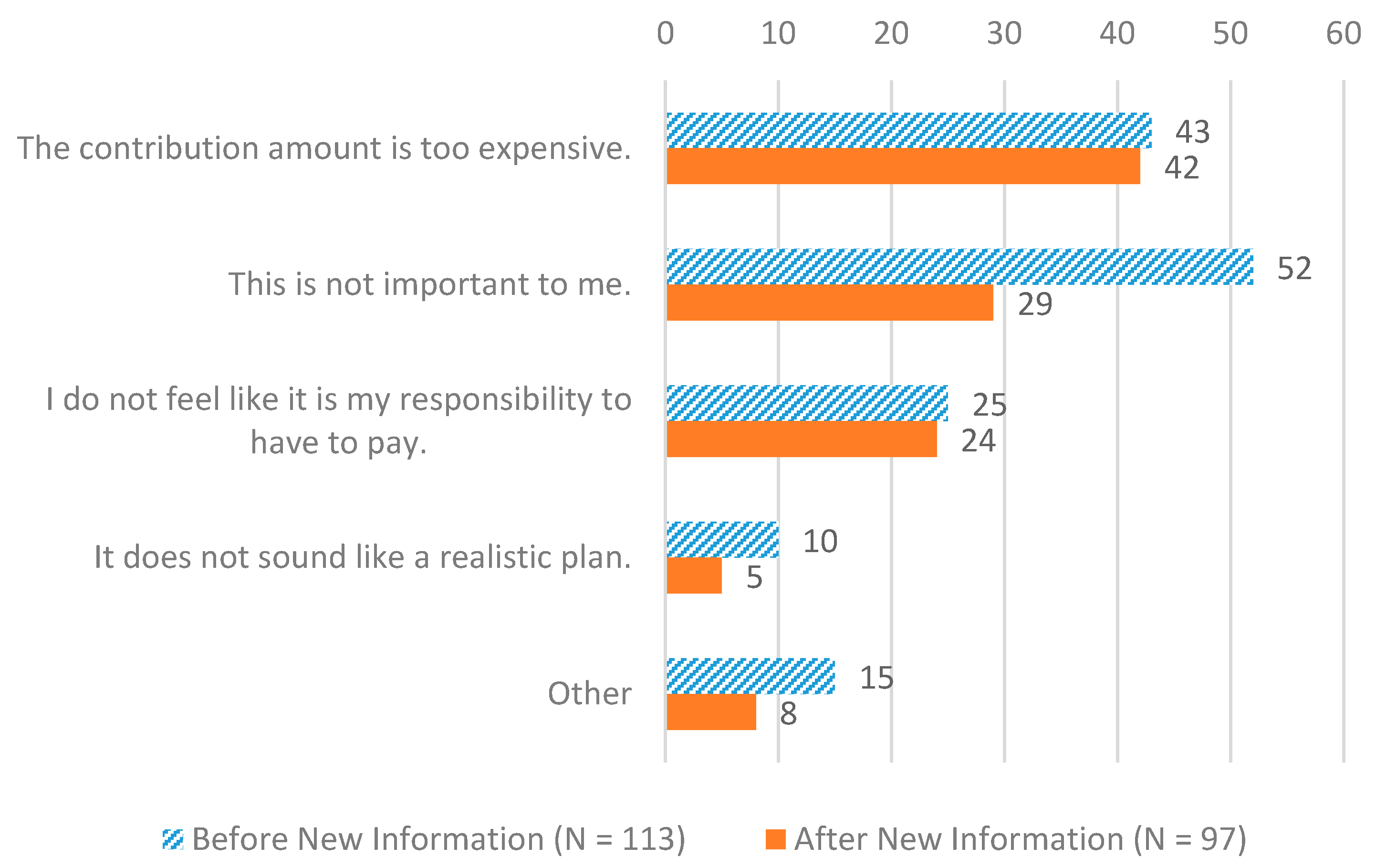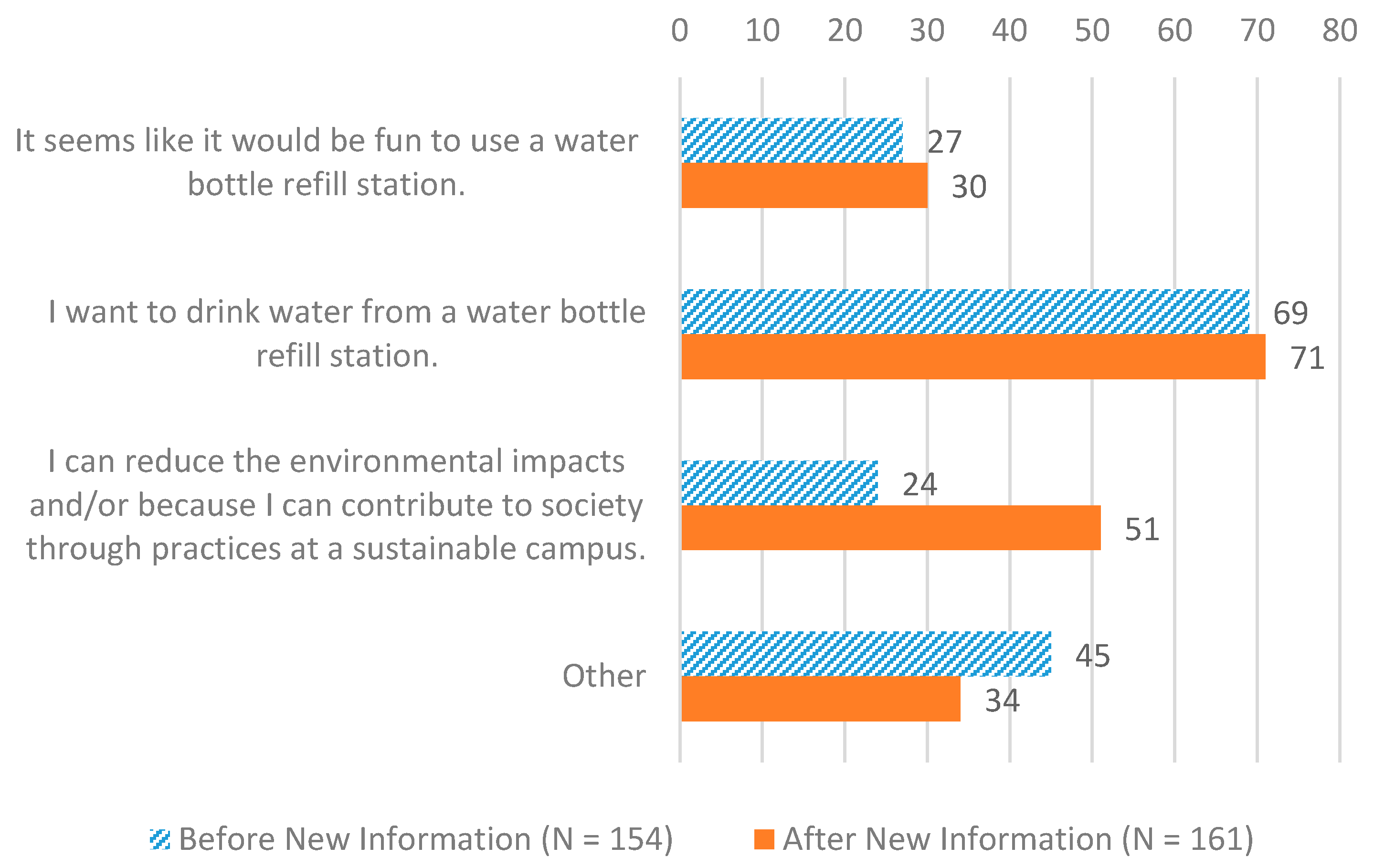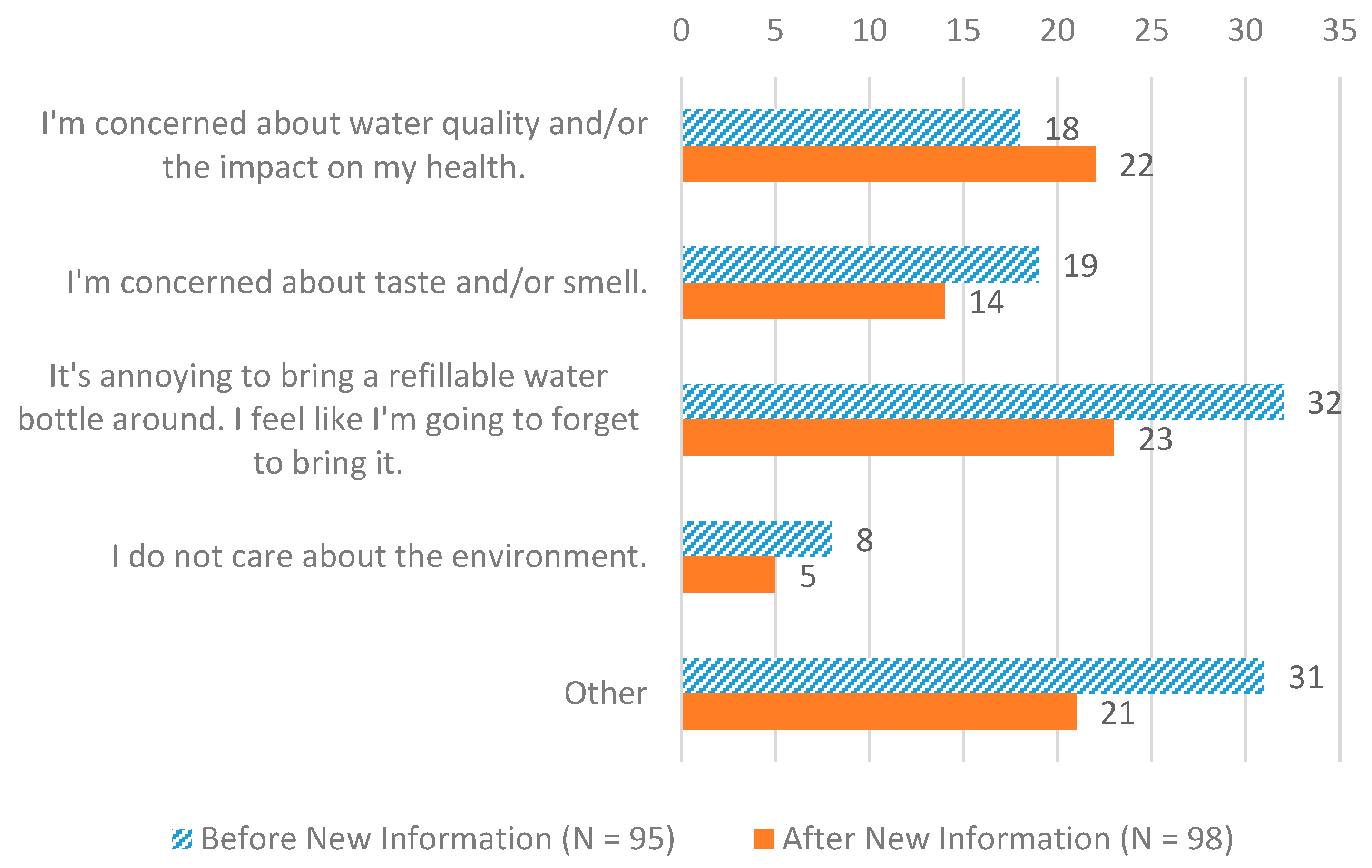This section addresses the materials and methods used to answer our three research questions. After introducing our case study, we explain the theoretical background we based our questionnaire design on. Then, we explain the questionnaire design and assessment methods. Lastly, we explain how we analyzed the data obtained from the questionnaire survey.
2.2. Theoretical Background
There have been a number of theories developed to understand pro-environmental behavior. For example, Theory of Planned Behavior (TPB), Value-Belief-Norm theory (VBN), and Goal-Framing Theory (GFT) are prediction models commonly used in environmental research [
28,
29]. Each theory has a different focus. While the TPB focuses on individual cost-benefit analysis [
30,
31,
32], the VBN focuses on personal norm [
33]. GFT is more comprehensive than TPB and VBN because it proposes three different goals (hedonic, gain, and normative) to encourage pro-environmental behavior [
34]. Self-regulation models are another type of theory focusing on the dynamic psychological mechanisms explaining people’s behavior, as opposed to predicting people’s behavior [
28].
Our research adopted the Integrated Framework for Encouraging Pro-Environmental Behavior (IFEP), which draws on GFT [
29], for our theoretical background. There have been a number of studies conducted utilizing the IFEP and GFT. One example is its use to test the empirical validity of the IFEP in Sweden [
35]. Another example is the work of Rezvani et al. [
36], who applied GFT to try to explain consumer electric vehicle adoption. Pro-environmental behavior often involves a conflict between hedonic or gain goals with normative goals; therefore, strategies to encourage pro-environmental behavior should take into account the conflict or balance among them. The IFEP proposes two strategies to influence hedonic, gain and normative goals. The first strategy is to reduce the conflict between hedonic (e.g., enjoyable) or gain goals (e.g., cost saving) with normative goals (e.g., right thing to do). It is important to note there is some risk in encouraging hedonic and gain goals exclusively as it may push normative goals to the background and undermine sustainable pro-environmental behavior [
29]. Therefore, the second strategy is critical to strengthen normative goals for substantial behavior change. If a person focuses on normative goals, it strengthens individual values which in turn can impact the way a person perceives the importance of a situation. If normative goals are linked to a person’s values, the strength of those values can outweigh perceived costs of pro-environmental behavior.
There are two reasons we adopted the IFEP for our research. First, it includes more comprehensive goals than other theories and our case study utilizes these various goals. Other theories, such as the theory of planned behavior, focuses more on individual cost-benefit analyses [
30], which is not the focus of our particular case study. Second, the IFEP emphasizes that situational factors play a prominent role [
29]. The main intention behind installing WRS on campuses is to introduce a situational factor, which in this case, would be to deter students from using disposable plastic bottles.
2.3. Questionnaire Design and Asessment Methods
Based on the IFEP framework, we designed a survey to test how WRS could contribute to influencing students’ pro-environmental behaviors. The target pro-environmental behavior was to encourage students not to use disposable plastic bottles, which would result in less plastic waste and CO2 emissions. This behavioral change may create a conflict between hedonic or gain goals and normative goals; students would have to give up convenient and better tasting water (i.e., disposable plastic water bottles) in order to support a pro-environmental choice. Therefore, the IFEP may be effective in encouraging students to make the pro-environmental change by reducing the conflict between these goals.
Figure 1 describes the main components of the survey including their hypothetical relationships and expected attitudes, along with the two corresponding strategies proposed in the IFEP. The Type of Strategies ‘1’ label indicates the removal or reduction of the conflict between hedonic or gain goals and normative goals. The Type of Strategies ‘2’ label indicates strengthening normative goals.
The survey was comprised of two stages. For Stage 1, we proposed the installation of WRS on campus without giving a lot of detailed information about WRS or its background, and then asked for their support and WTU. The installation is a so-called contextual factor (or situational cue) intended to make pro-environmental behaviors more accessible by reducing the cost of engaging in pro-environmental behaviors [
29,
37]. The students’ support was measured by their WTP for the installation of WRS, and its environmental consequences were estimated by their WTU and changes to their plastic bottle usage. The students would donate an amount just once. While our study adopted a one-time donation method, there are other types of payment vehicles available such as paying higher prices, taxes, or a surcharge on utility bills [
38]. Each payment vehicle has its own strengths and weaknesses. For example, while donation methods could yield an underestimate of value, taxes could lead to protest responses [
39]. In other words, the specification of a payment vehicle could cause unintended effects or vehicle bias [
38,
39]. We confirmed the validity of a donation method as a payment vehicle in our pre-test prior to our main survey. We further questioned the students’ reasons for their approval or disapproval of the WRS installation plan and their WTU WRS in order to test hypothetical relationships.
For WTP estimates, we adopted a double-bound dichotomous choice method, a type of Contingent Valuation Method (CVM), to elicit students’ WTP for the WRS’s installation because it is less susceptible to biases compared to other methods [
40]. We proposed seven different bid amounts (250, 500, 1000, 2000, 4000, 8000, and 16,000 JPY) (see
Supplementary Materials SI1 for the scenario for CVM). Five different combinations for bid values (in JPY) were used (Initial; Lower; Upper): (500; 250; 1000), (1000; 500; 2000), (2000; 1000; 4000), (4000; 2000; 8000) and (8000; 4000; 16,000). Selecting the bid amounts was critical [
41,
42] and a challenge for our study because, to our knowledge, there are not any similar studies in the literature we can refer to. A double-bound question (or one follow-up) is said to increase estimation efficiency when a priori knowledge is not available, as in our study, to guide bid design [
42]. As a reference, we chose the combination of bids used by Sakurai and Uehara [
43] from their survey with similar sample (i.e., students in the same department at the same university). However, since the topic is not germane to our study (to reduce smoking on campus), we carefully verified the validity of the combination from the smoking survey in 2017 in our pre-test prior to our main survey. Using a pre-test or a focus group is a common method used to choose bid amounts [
44,
45]. The combination was verified from the pre-test; it was neither too low nor too high [
39]. A smaller number of bids (five to eight) is also considered to be an effective method to increase estimation efficiency [
39,
41].
At Stage 2, we provided further information about the WRS including the background of the device’s installation to examine how additional information might change students’ support and WTU. For Stage 2,
Figure 1 describes the different kinds of additional information we provided and its hypothetical impact on students’ attitudes toward a WRS. We explained how focusing on environmental issues and campus sustainability is not only important for the university but it is also a social responsibility [
46]. We also reminded students that their university, Ritsumeikan University, had created a guideline to support pro-environmental behavior and which asks students and faculty members to contribute to the realization of a sustainable society [
27]. We explained the severity of increasing plastic waste including related CO
2 emissions [
8,
47] and its potential impact on humans, animals, plants, and ecosystems [
14]. We also explained additional characteristics of a WRS such as how it could be fun to see the counter counting the number of bottles saved and its water quality in comparison with bottled water. Lastly, we mentioned how WRS are common on U.S. campuses. To assess the impacts of the information as it was disseminated, we measured changes in WTP, WTU, and plastic bottle usage. We further investigated the student’s reasons to approve and disapprove the bid amount to install the WRS and their WTU WRS to test hypothetical relationships.
In addition to questions directly related to WTP, WTU, and plastic bottle use calculations, we also asked students about their basic characteristics and daily habits (e.g., gender, frequency to campus, etc.), preference of drinking water [
25], attitudes toward sustainability at school/community and their own personal responsibility [
5], as well as educational background [
3] in order to examine their potential relevance to WTP, WTU, and plastic bottle use. We adopted a best-worst scaling (BWS) [
48] method in order to measure the students’ priorities for their choice in drinking water (i.e., health, taste, convenience, costs, and environmental costs). BWS is easier to answer because it asks respondents to choose what they feel are least and most important, rather than having to individually rank a large number of possible options. By reiterating these possible options in a number of different sets, the ranking of all the possible choices were revealed. We used the counting approach [
49] and adopted the following
to measure how to present the relative importance of choice
.
and indicates the number of times choice is selected as the best and the worst out of all the questions by respondent respectively. is the number of times item appears in all the questions. indicates the number of respondents. is zero when respondents select choice as the best as frequent as they select it as the worst or, if they select it neither as the best nor the worst.
